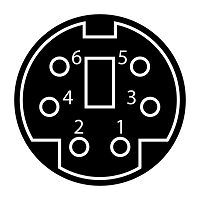 NOTICE! Absolutely nothing
on this page is approved or endorsed by APC or Schneider Electric! This
page is entirely the work of an electronics hobbyist. Information on
this page is presented strictly on a "use at your own risk" basis.
Disassembling or modifying any electronic product can be dangerous,
will invalidate any warranty or service contract you have, or possibly
worse! So don't do it, unless you're prepared to accept ALL the
consequences of your actions, good or bad!
NOTICE! Absolutely nothing
on this page is approved or endorsed by APC or Schneider Electric! This
page is entirely the work of an electronics hobbyist. Information on
this page is presented strictly on a "use at your own risk" basis.
Disassembling or modifying any electronic product can be dangerous,
will invalidate any warranty or service contract you have, or possibly
worse! So don't do it, unless you're prepared to accept ALL the
consequences of your actions, good or bad!Note: This page focuses primarily on the older AP9162 board and the AP9512 probes that go with it. I have added some information on the newer AP9335T and TH products further below.
APC's AP9612 SmartSlot accessory senses temperature and humidity through up to two attached probes, provides a low current regulated 12 volt output and four connections for dry contact switches or sensors that may be monitored by the card's logic. The temperature probes attach externally to the card and may be situated some distance away.

